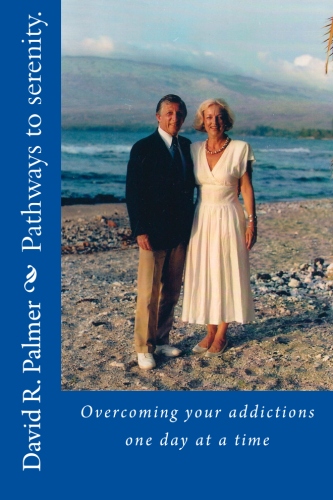On a winter night in 1976, Mary T. decided she would kill her alcoholic husband, when he came home from work.
Frustrated by her inability to control his drinking, Mary finally said to herself, “It’s not the drinking, it’s him. He’s the problem, and I need to get rid of him.” Attracted to the image of herself as a widow, she had rejected the divorce option and went straight to murder.
As to the means, she eliminated both an ice pick in the neck and running over him in the family car. Instead she chose drowning him in the bathtub when he came home drunk, making it look like an accident.
With her mind made up, the first night he showed up drunk, she hit him. When he fell, he hit his head on the coffee table, and it knocked him out. She filled the tub, took off his clothes and pushed him in, and he slipped beneath the surface.
Then she thought to herself, “what am I doing? This is premeditated murder.” And she pulled him up by the hair but then quickly convinced herself that no one would catch on and shoved him back under.
As Mary tells this story to predominantly female audiences whose members have had similar inclinations with errant spouses, the laughter begins to build and increases as she pulls him out, lets him slide again and then finally pulls him out, restarts his breathing with CPR, and drags him, still unconscious, to the bedroom.
She fluffs up the pillows, props him up in the bed and grabs her hair dryer.
“His hair tends to curl, and he likes it straight like Conway Twitty,” Mary explains. When she left him sitting bolt upright in the bed, every hair in place, she closed the door, went to her room and cried.
Over the next three days, the patient, suffering from acute alcohol poisoning, would call out, but Mary stayed away. On the third day he emerged. In January 1977, Mary turned to Al-Anon and her husband began attending Alcoholics Anonymous meetings. (More about Al-Anon shortly).
Since then Mary has probably told the bathtub story a thousand times to audiences around the world beginning with her Rose City home group housed for many years in the stone building at 803 Water Street that her grandfather built in 1933.
Making a point
The bathtub story makes the point that her husband was clearly one very sick alcoholic, but it also reveals that Mary was sick too, partly because she was surrounded by the affects of alcoholism as a child, and she also married two. Neither Mary nor her husband really knew what they had. That came later.
The story also offers vicarious pleasure to those who have gone through the torment of living with an alcoholic and are glad to see one getting roughed up.
Over the past 35 years, Mary has become widely recognized in Al-Anon circles much like the late Joe McQuany, a recovering alcoholic, who received global recognition in the field of alcoholism.
So what, exactly, is Al-Anon?
Al-Anon, to quote the official literature, “is a fellowship of wives, husbands, children, parents, other relatives and friends of problem drinkers.
“Members of (Al-Anon) groups share their experience, strength and hope with each other in order to solve their common problems — fear, insecurity, lack of understanding of themselves and the alcoholic and damaged personal lives resulting from alcoholism, a family illness.
“By attending Al-Anon meetings and applying the 12 steps of recovery adapted from Alcoholics Anonymous (AA) to their personal lives, many have found the help they need to deal with the effects of living with or having lived with the alcoholism of another.”
As Mary immersed herself in Al-Anon, she began to contemplate a dysfunctional childhood that at least partly explained the anger and violent streak that manifested themselves.
Rampant Alcoholism
Alcoholism was rampant on her mother’s side of the family, but she was partly shielded from abuse by her father, a career Army officer. She doted on him and became “daddy’s girl.” His death when she was 12, devastated her. “I lost my faith in God and declared war on my mother,” she says, a woman who didn’t drink “but probably should have.”
In 1960, Mary graduated from North Little Rock High School with honors and made her escape. She married an Air Force aircraft mechanic and moved with him on his assignment to Newfoundland.
While she drank a lot in the early days, Mary says her real drug of choice was adrenalin, an addiction that resulted in infidelities, rage and other destructive behaviors. After manipulating her husband’s reassignment from New Foundland to Little Rock Air Force Base instead of Wichita, they ultimately divorced.
Mary devoted part of her free time to the 1960’s hippie movement, parting her long hair in the middle and hanging out with a bad crowd. She also added the phrase, “Always keep somebody around you who is doing worse than you are” to her list of perspectives on life.
She also began dating her current husband, a welder from Punkin’ Bend, Arkansas, and after a four-year courtship they were married in Jacksonville in 1969 and settled down in Rose City, Mary’s hometown, two years later.
For the next seven years her husband’s alcoholism progressed, and he would drink and leave and be gone for days. Meanwhile, Mary’s growing resentment was starting to boil over.
“When he drank, I got violent,” Mary says, and she punished him.
“He became my child. When he misbehaved, I physically whipped him.
I knocked his teeth loose and broke his bones,” she says.
Not long before the bathtub incident, Mary says, she was “playing hide and seek” with her husband. He was hiding at Club 70 in North Little Rock, and she was looking for him.
When she found him sitting at a table with a woman, Mary punched him and the woman in the face, turned the table over and attacked the bouncer who was attempting to intervene.
When the police arrived, they arrested her and took her to jail.
Mary says there is a reason Al-Anons tend to lash out with anger. “When drunks drink they actually do get some relief from their pain,” Merp says. “Al-Anons don’t get that kind of relief, and they don’t know what to do with that pain.”
Now 68 with an unlined sweet face framed by close cropped white hair, Mary is celebrating 33 years of recovery and looks nothing like the wild woman she was, and she says she feels nothing like her either.
Booked Solid
She sponsors Al-Anon women all over the world and is in great demand as a speaker. She also does workshops for couples struggling with relationships.
Mary is quick to say that she is not a big deal. “Al-Anon is a way of life for me, but I don’t pretend to be an authority on it. I’m an authority on me. Like the book says, ‘It’s principles before personalities.’”
Tapes and CDs of her speaking engagements are in great demand, and in her eight-disc collection called “Doin’ the Twelve Steps” she describes her own recovery with both insight and humor.
The first step for both AA and Al-Anon is “We admitted we were powerless over alcohol — that our lives had become unmanageable” and, like most, Mary had problems admitting both powerlessness and unmanageability.
The paragraphs below are a sample of her discussion of the first step in “Doin’ the Twelve Steps,” beginning with a review of what makes her an Al-Anon. For her, that includes getting a sponsor, working the steps, and regularly attending meetings.
It also, she says, includes eliminating some destructive words in her vocabulary. Not four letter words but phrases like “what if,” which is living in the future; “yes, but,” which really says, “I hear you, but I ain’t gonna do it,” and “I know,” which says “you can’t teach me.”
Mary has had the same sponsor for 33 years, and they are as close as two people can be. Mary hated asking the woman to be her sponsor, but she had what Mary wanted. “She was always smiling and sincere, and she wasn’t afraid of me.”
A Racist
The sponsor was also black, and Mary hated blacks.
“I was raised a racist, and I told her up front I didn’t like — I used the ‘n’ word — and she said, ‘me neither.’ Turned out her definition of the word had something to do with behavior but nothing to do with color.”
Thanks to her sponsor, Mary says, “I have come to accept all people, regardless of color or other differences.”
Mary, who had used intimidation as a defense, had met her match and ultimately came to realize that she had to be in control, sometimes using intimidation, because she was “scared to death.”
In the initial stages of recovery, she remained angry most of the time which prompted her sponsor to pose the question, “If you admit you are powerless, why are you upset over all the things that make you angry?”
Mary’s sponsor also discouraged her from doing too much thinking.
“You can’t think yourself into right thinking,” she said. “Your thinking is broken.”
Instead, she should seek, her sponsor said, “understanding which leads to knowledge which leads to wisdom. And wisdom comes from God.”
As with most Al-Anons, Mary had trouble with denial and tells a story to illustrate the point.
“A priest and a Rabbi and an Al-Anon find themselves in hell and when asked by Lucifer why they are there, the Rabbi says he got hooked on pork and couldn’t stop eating the forbidden food. The priest says he got involved with a young woman and violated his vow of celibacy.
The Al-Anon said, “I don’t know what you are talking about. It’s not hot, and I’m not here.”
The bottom line, Mary says, is, “We have to surrender. We are powerless over everything. You don’t have to like something to accept it.”
Editor’s note: first published in the June 2007 issue. At this writing, Merp is alive and well and living in North Little Rock. In keeping with Al-Anon tradition, last names are not used.




